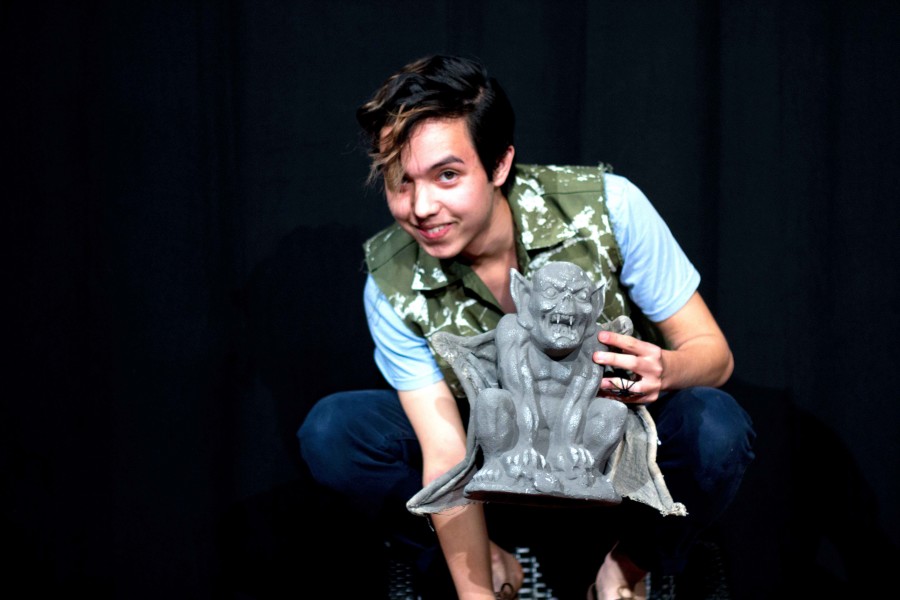Your donation will support the student journalists of San Juan Hills High School. Your contribution will allow us to cover our annual professional memberships as well as equipment and other costs associated with bringing you high quality student journalism.
Kenley Farace
April 29, 2015
Imagine growing up, feeling like you were someone who was not the person they were raised to be, being someone with no cultural identity that you are able to connect with, and living in the world with a big question mark floating above your head.
This is the world Kenley Farace (12) has grown up in.
Kenley associates as a non-binary queer, adopts the pronouns they, them, and theirs.
Although Kenley may present themselves as masculine in appearance with a five o’clock shadow and a flannel button down, they do not associate as a male, nor do they associate with the cultural identity of a gay man; although they are attracted to masculinity. They don’t even associate as female. Kenley is all and none, best described as non-binary; associating as neither male, nor female.
“Queer” is a significant word for Kenley. The term has been used as a derogatory slur in the past; however, it has been reclaimed by the LGBTQ+ community as a term referring to gender and sexuality minorities; people who are not straight or cisgender. Kenley, in turn, identifies their sexuality as queer and does not identify with the gender assigned to them at birth.
Kenley first realized they were different than the majority of students in their middle school around the age of twelve. Around this time, many kids find that their sexual feelings begin to develop but Kenley was not attracted to girls in the same way the other boys were. Kenley rather found that they were attracted to boys, or masculinity. Although they never really felt secure in school, Kenley felt welcomed and received little, if any, adversity coming out as gay. Their family was very accepting and happy for them. Kenley felt as if they had found some identity for themselves, however, this identity was not the one they could settle in.
After coming out, Kenley noticed a difference between themselves and the cultural connotation of gay culture. Kenley felt insecure in the fact that they did not fill any role given to them by society. Feeling one way and desiring to be another, Kenley went through a phase of “purging the femininity” out of their life. Striving to be masculine, they listened to angry music and hoped they would fill the blank space in their “hello my name is” tag.
During their freshman year, Kenley went through a “bowtie phase” in an attempt to convey their masculinity through a less hyper-masculine medium.
In between their freshman and sophomore year, Kenley attended a queer leadership camp through the Gay-Straight Alliance (GSA) Network and met a group of non-binary people. This is where they were first introduced to the idea of being non-binary. It was not until their junior year that the connection was made and the blank space filled.
It was after coming out as Non-Binary that Kenley finally felt comfortable and their emotions seemed to settle. Their style moved away from hyper-masculinity, an attempt at concealing their insecurities, to a more relaxed “wear whatever” approach. With newfound identity, Kenley felt they could move on and live their life as their own self.
As the president of the Queer Alliance club at SJHHS, with very strong beliefs in queer culture and rights, Kenley hopes that there will be more representation of queers, on and off campus. They also hope that their story provides the proof that non-binary people exist, that it is not uncommon, and that their peers recognize it as a respective gender identity.
